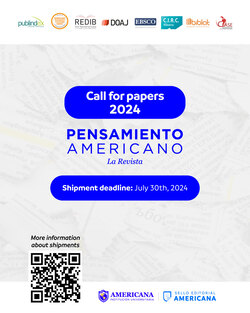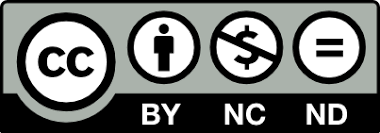Biocultural semiosis to study the origin of the newborns’ signs
DOI:
https://doi.org/10.21803/pensam.v8i15.80Keywords:
Semiosis; Signo; Biocultural; Ontogenia;Desarrollo;Semiosis; Sign; Biocultural; Ontogeny; DevelopmentAbstract
El ser humano es un ser en desarrollo por lo cual su comprensio?n requiere un estudio de dicho proceso. En este escrito se presenta una perspectiva acerca de co?mo los seres humanos se desarrollan como seres bioculturales y un modelo para resolverlo. Se trabajo? con una base biolo?gica, semio?tica y en complejidad. Sobre estos fundamentos teo?ricos se identifican tres feno?menos que interactu?an para construir las caracteri?sticas bioculturales. Los feno?menos son: el desarrollo del cuerpo humano, el cerebro como parte del sistema nervioso en el desarrollo del cuerpo y dentro de una matriz sociocultural. Se aplica el modelo para entender que el resultado de los procesos de semiosis son seres bioculturales. El origen ontoge?nico de los signos es producto de semiosis que sucede en los primeros momentos posteriores al nacimiento. A este proceso se le llama semiosis biocultural para enfatizar el proceso que le da estructura.
Abstract
The human being is a being in development, so its understanding requires a study of the process. Here we present a perspective on how humans develop as bio-cultural beings and a solving model. We worked with a biological, semiotic and complexity base. On these theoretical foundations, three phenomena interact to build the identified human bio-cultural characteristics. The phenomena are: the development of the human body, the brain and the nervous system in the development of body and within a sociocultural matrix. The model was applied to understand that the outcome of the processes of semiosis is a bio-cultural being. Ontogenetic origin of the signs is the product of semiosis that happens in the first moments after birth. This process is called biocultural semiosis to emphasize the process that gives structure.
Resumo
O ser humano e? um ser em desenvolvimento, portanto, sua compreensa?o requer um estudo de tal processo. Nesse trabalho, se apresenta uma perspectiva sobre como os seres humanos se desenvolvem como seres bioculturais e e? apresentado um mo- delo para resolve?lo. No?s trabalhamos com uma base biolo?gica, semio?tica e em complexidade. Em relac?a?o a estes fundamentos teo?ricos, identificamos tre?s feno?menos que interagem para construir as caracteri?sticas bioculturais. Esses feno?menos sa?o: o desenvolvimento do corpo humano, o ce?rebro como parte do sistema nervoso no desenvolvimento do corpo, e dentro de uma matriz sociocultural. O modelo foi aplicado para entender que o resultado dos processos de semio?tica sa?o seres bioculturais. A origem ontogene?tica dos sinais e? produto de semiose que acontece nos primeiros momentos apo?s o nascimento. A este proces- so chama-se de semio?tica biocultural para enfatizar o processo que lhe da? estrutura.
Downloads
References
(1) Changeux, J. P. (2006). El hombre de verdad. México: Fondo de Cultura Económica.
(2) Cocho Gil, G. (2013). Complejidad, criticalidad y humanismo creativo. En A. Guevara Villegas y otros (autores), E. Vizcaya y otros (eds.), Ciencia y Sociedad: Pincela- das (pp. 67-92). México: CopItarXives.
(3) Geertz, C. (1987). La interpretación de las culturas. Barcelona: Gedisa.
(4) Harris, M. (1986). Caníbales y reyes. Los orígenes de la cultura. Barcelona: Salvat.
(5) Harris, M. (1989). Teorías sobre la cultura en la era postmoderna. Barcelona: Crítica.
(6) Hidalgo García, M. V., Sánchez García, J. & Lorence Lara, B. (2008). Procesos y necesidades de desarrollo durante la infancia. Revista de Educación, 10: 85-95.
(7) Hodge, R. & Kress, G. (1988). Social Semiotics. UK, Polity Press.
(8) Leach, E. (1978). Cultura y comunicación. La lógica de la conexión de los símbolos. México: Siglo XXI.
(9) Lidov, D. (1998). Semiosis. In: Paul Bouissac (Editor in Chief). Encyclopedia of Semiotics. New York, Oxford University Press.
(10) Pierce, C. S. (2010). The Logic of Signs. In D. Favareau (ed.), Essential Readings in Biosemiotics. Antology and Commentary. New York: Springer.
(11) Saussure, F. (1980). Curso de lingüística general. México: Fontamara.
(12) Trevarthen, C. (2011). What is it like to be a person who knows nothing? Defining the active intersubjective mind of a newborn human being. Inf. Child Develop., 20, 119-135. doi: 10.1002/icd.689
(13) Urizar Uribe, M. (2012). Vínculo afectivo y sus trastornos. Recuperado de http://www. avpap.org/documentos/bilbao2012/vin- culoafectivo.pdf
(14) Waddington, C. H. (1942). Canalization of development and the inheritance of acquired characters. Nature, (3811): 563-565.
(15) Zavala Olalde, J. C. (2013). El signo. Ciencias, (109-110): 68-69.
Downloads
Published
Issue
Section
License
Copyright (c) 2015 Pensamiento Americano

This work is licensed under a Creative Commons Attribution-NonCommercial-NoDerivatives 4.0 International License.
The author or authors of an article accepted for publication in the Journal Pensamiento Americano will transfer all of the patrimonial rights to the American University Corporation free of charge, within which are included: the right to edit, publish, reproduce and distribute both print media as digital, in addition to include in article in international indexes and / or databases, likewise, the Editorial Seal is authorized to use the images, tables and / or any graphic material presented in the article for the design of covers or posters from the same magazine. By assuming the patrimonial rights of the article, it may not be partially or totally reproduced in any printed or digital media without its express permission.
AUTHORITY ASPECTS
For the Pensamiento Americano Journal, all the authors of an article have made substantial contributions to the research and the manuscript, and they share the responsibility when the article presents errors, fraud in some way or violations of copyright.
After submitting an article, the journal does not accept the addition, deletion or change in the order of the authors, in addition we reserve the right to release the article when it has been submitted to the journal and under no circumstances will American Thought accept the article. withdrawal of an article during any phase of the editorial process






